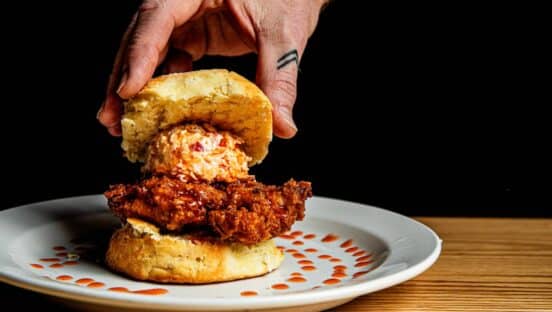Shake Shack CEO Randy Garutti clicked the drive-thru headset on and listened. For 23 years, he watched innovation stretch from a hot dog cart to one of fast casual’s biggest growth stories. From kiosks to app launches, suburban migration and new-market entries, delivery activations, celebrity collaborations, overseas growth, airports, roadside, and more, Shake Shack’s model has adjusted as the category has. Or, more recently, to an omnichannel world the quick-service customer is taking it to.
In this case, Garutti donned the gear at a Maple Grove, Minnesota, location that opened December 6 with snow on the ground. The first drive-thru in brand history features two lanes, colorful digital menuboards, and a split-kitchen design with a separate space for drive-thru orders. Employees roam the line and take orders and payment at multiple points.
“And [to] see why people choose drive-thru, the reasons they’re going to go around the back, yet continue to pack our restaurant inside the Shack experience—that’s what we’re building,” Garutti said of that day. “That’s what we’re changing.”
READ MORE: Take a tour of Shake Shack’s first drive-thru
The debut was followed by another Q4 drive-thru opening in Lee’s Summit, Missouri. Ten are projected to open this year, including spots in Orlando, Michigan, and Denver.
But the model isn’t a full-throttle direction for Shake Shack as much as evidence of newfound agility, triggered years forward by COVID dynamics. The brand will soon cut the ribbon on a Hasbrouck Heights, New Jersey, restaurant with “limited to no-seating” inside. “What can drive-thru look like as a true drive-thru experience for most of the sales happening there or [on] an outdoor dining patio,” Garutti said Tuesday at the virtual ICR Conference. “That could be a format we look at in the future.”
Shake Shack calls this store flexibility and evolution “Shack Track,” which refers to the brand’s efforts to deliver food via setups like pickup windows, drive-thru, and curbside. In Oak Lawn, Illinois, there’s a “Shack Track Drive-Up Window” where customers pre-order on the brand’s digital channels only, and pickup and go. Like Chipotle’s “Chipotlanes” it’s not a traditional drive-thru in there’s no orderboard or dedicated infrastructure beyond the window. “We’ve got a handful of these open,” Garutti said. “And we’ll do more this year.”
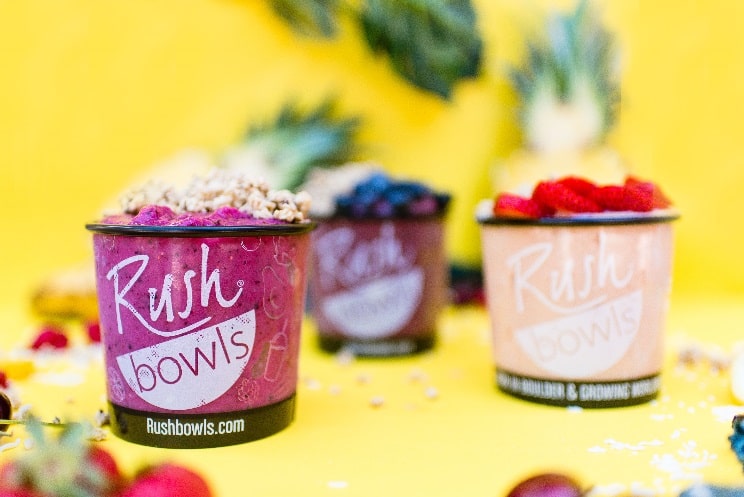
Yet meanwhile, Shake Shack’s development into digital-fueled designs is meant as a complementary arm of its business. The company ended Q4 with New York sales, including Manhattan, down just 13 percent versus 2019. Across the fleet, as in-store business doubled versus early COVID plunges, Shake Shack has held 80 percent of digital gains as that chunk of mix rises to 42 percent of all transactions (app, web, and delivery). The company added 10 percent new purchasers (3.5 million) through its company-owned app and web channels during the pandemic. At stores with kiosks, more than 75 percent of sales flow through the feature and other digital channels.
The sentiment being, Shake Shack’s digital and physical footprints are evolving as twin efforts at this stage in the rebound. And despite day one setbacks, the brand’s history as an urban company isn’t going away.
An upcoming Meatpacking District location, at the base of the Highline in New York City, is going to be an “amazing site,” Garutti said in one example, and a location that that would not have happened barring a pandemic.
“And we’ve got a lot of those in New York City and around,” he added. “We’re looking at the outer boroughs, more Manhattan, and we’re bullish on what our home city will bring and other urban centers.”
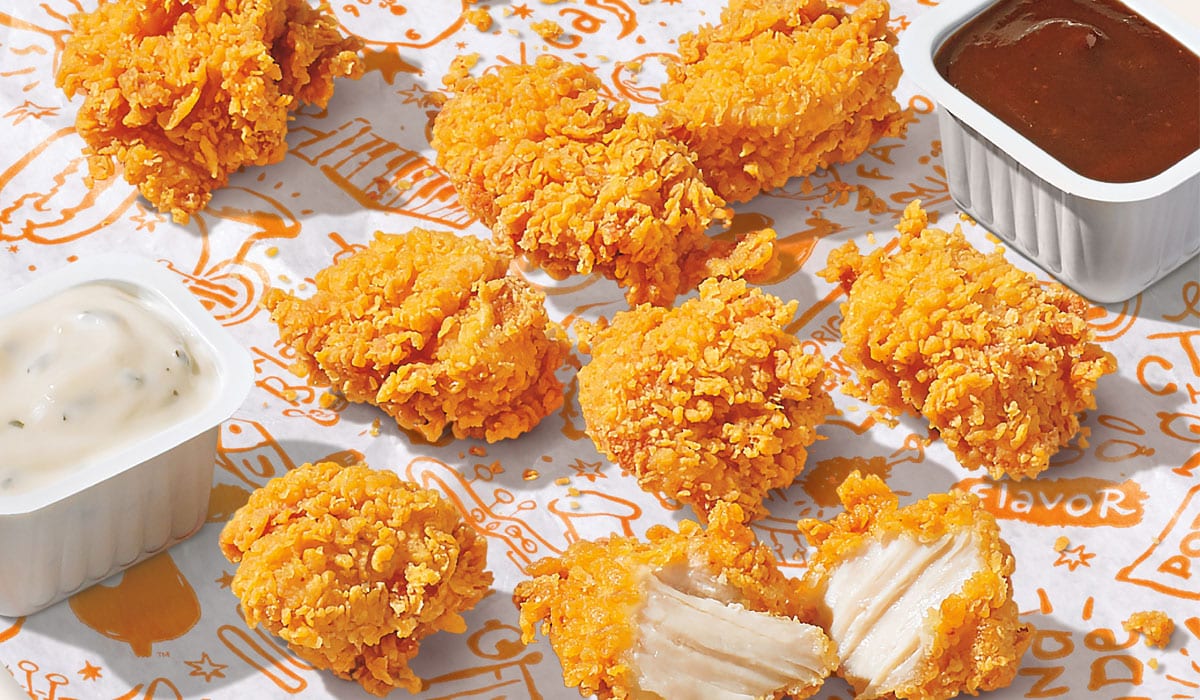
Based on renderings, it appears a reflection of how consumers, regardless of where they dine, want to access brands at their own pace. A wide pickup shelf design that wraps different ordering channels and convenience outlets into a single space.
Additionally, Garutti spoke briefly about airport units (which have been “the hardest hit place,” but “have come back quite a bit”), where the Denver location touts Shake Shack’s first bar. “You can get a Shack cocktail along with your burger,” he said. “Really fun site. Something we’re going to continue to think about, whether we can grow that down the road.”
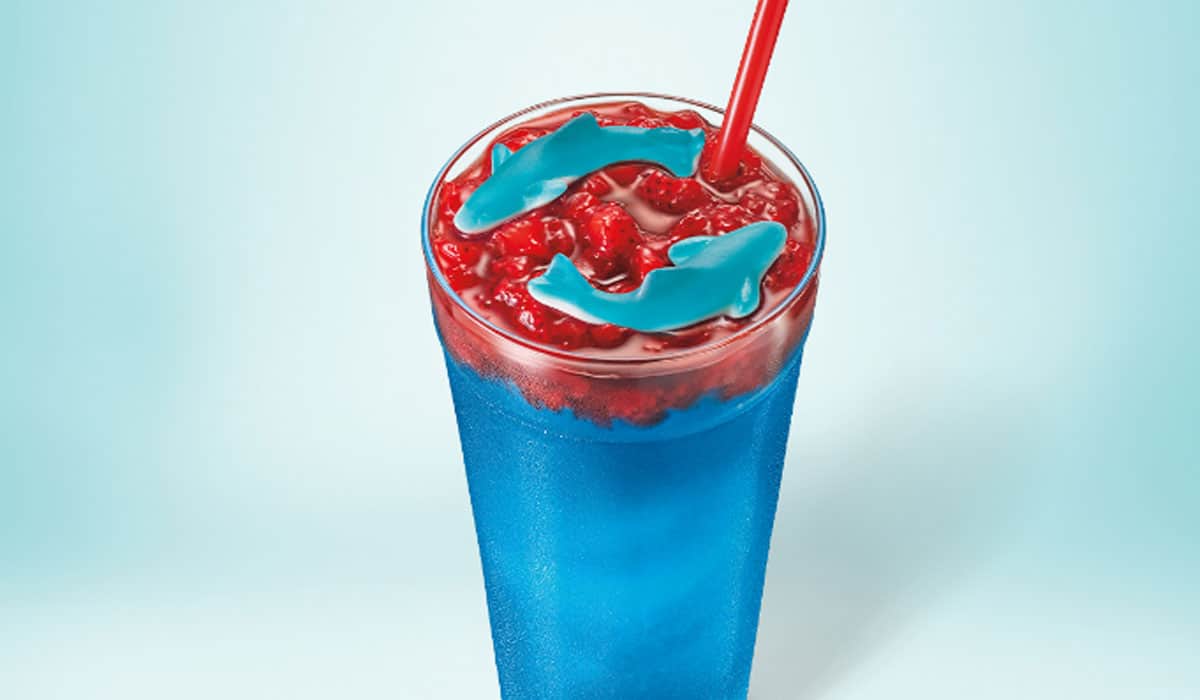
Events and other nontraditional venues, too, like the Dodgers Stadium Shake Shack that opened in April 2021, are on deck. And Garutti also outlined an opportunity he called a “new one for us.”
“We’ve been believers for a long time that whoever wrote the rule when you pull over to get gas or stop on the highway that it needs to be a less-than-perfect experience, we’re going to add something to the dialogue on roadside Shacks,” he said.
Shake Shack inked a deal to expand along the New York Thruway with C-store developer Applegreen. “We’re really excited about this model and what it could open up for us down the road.” One is headed to the Junius Ponds Plaza on I-90 west between exits 41 and 42.
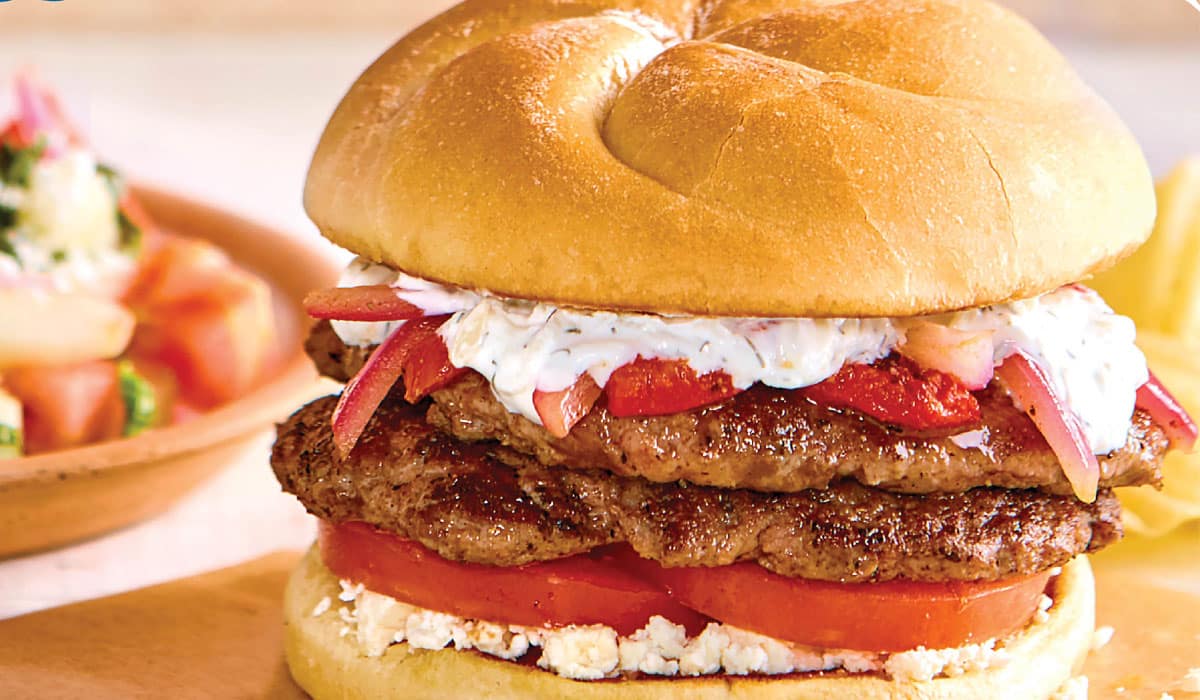
Overall, Shake Shack continues to face a sidewinding landscape. The chain’s Q4 performance outpaced historical seasonality, with average weekly sales of $74,000 compared to $72,000 in Q3 2021. Same-store sales climbed 2.2 percent over 2019 levels, improving from negative 7.3 percent in Q3.
A key split being the brand’s urban business exited 2021 down just 4 percent over 2019. Suburban was up 9 percent.

However, Garutti said, the brand’s operating hours dropped in the last week of the fiscal year, and the first two of the current one, due to a “sharp increase” in COVID cases stemming from the omicron variant.
“As around the world and in every service industry, we’ve had a lot of limited hours, a lot of closed restaurants, and limited staffing,” he said. “And we certainty have not been able to optimize sales in the last few weeks.”
“That is frustrating,” Garutti added. “But we very optimistic given the fourth [quarter] look of how things will rebound and get going later on in the year.”
Q4 revenue increased 29 percent to $203.3 million year-over-year as the company opened net 19 systemwide stores (13 domestic corporate units and six licensed restaurants). The company expects store-level operating profit margin to be about 16 percent of sales. For the full year, Shake Shack, which has a long-goal of 450 U.S. stores, opened 58 net venues (35 corporate, one closure, and 23 licensed, three closures). It closed Q4 with 218 company-run domestic venues and 151 global licensed Shake Shacks compared to 183 and 128, respectively, versus the prior year.

Speaking further to Shake Shack’s digital growth, CFO Katie Fogertey said an area of emphasis for the chain in 2022 will be to continue funneling users into native channels. It’s part of why the drive-thru and Shack Track initiatives are so vital—they present the brand’s off-premises capabilities in a branded and controlled format.
Shake Shack launched a new website last year and continues to invest “to build this true omnichannel guest experience,” Fogertey says.
“And we really want our own digital channels to be the preferred channels for our guests. We’re building personalized marketing opportunities to help drive frequency and guest connection. We just know and we continue to see it, when we bring a guest into our digital ecosystem, we see igher frequency, we see higher checks. There’s a better guest experience associated with that. We just think they understand who we are and the value that we offer more.”
Making sure operators have the tools to best handle Shake Shack’s ballooning digital business is a critical element of all of this, she adds, from the store prototypes to the backend updates.
As part of the new website launch, Shake Shack refreshed graphics to help drive guests through the ordering process. Also, it’s been “a great tool” to fuel app downloads, Fogertey said. Guests are immediately pushed to download Shake Shack’s app. The company updated that platform as well, including dynamic prep time. “We found that some of the larger issues that our guests have flagged before is an unknown wait time,” she said. “They go to Shake Shack and they just don’t know how long it will take.” This investment communicates that process with guests. Add in Shake Track and all of the new channels available, and Shake Shack can direct consumers to the most convenient format, whether it’s the pickup window or shelf.
“We’re seeing good early success there,” Fogertey said.
With kiosks, Shake Shack will further rollout going into 2022. When guests have the ability to access one, the brand sees higher checks, as well as a better understanding of the menu, she added. They’re more likely to add-on items like shakes.
“It’s just something that we want to continue to integrate and bring into our fold,” Fogertey said.


